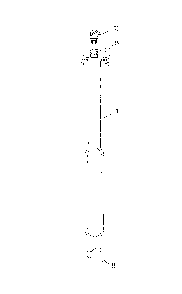Une partie des informations de ce site Web a été fournie par des sources externes. Le gouvernement du Canada n'assume aucune responsabilité concernant la précision, l'actualité ou la fiabilité des informations fournies par les sources externes. Les utilisateurs qui désirent employer cette information devraient consulter directement la source des informations. Le contenu fourni par les sources externes n'est pas assujetti aux exigences sur les langues officielles, la protection des renseignements personnels et l'accessibilité.
L'apparition de différences dans le texte et l'image des Revendications et de l'Abrégé dépend du moment auquel le document est publié. Les textes des Revendications et de l'Abrégé sont affichés :
| (12) Brevet: | (11) CA 1318524 |
|---|---|
| (21) Numéro de la demande: | 1318524 |
| (54) Titre français: | DISPOSITIF DE MESURE DE LA TEMPERATURE |
| (54) Titre anglais: | TEMPERATURE MEASURING SENSOR ARRANGEMENT |
| Statut: | Périmé et au-delà du délai pour l’annulation |
| (51) Classification internationale des brevets (CIB): |
|
|---|---|
| (72) Inventeurs : |
|
| (73) Titulaires : |
|
| (71) Demandeurs : |
|
| (74) Agent: | GOWLING WLG (CANADA) LLP |
| (74) Co-agent: | |
| (45) Délivré: | 1993-06-01 |
| (22) Date de dépôt: | 1989-06-02 |
| Licence disponible: | S.O. |
| Cédé au domaine public: | S.O. |
| (25) Langue des documents déposés: | Anglais |
| Traité de coopération en matière de brevets (PCT): | Non |
|---|
| (30) Données de priorité de la demande: | ||||||
|---|---|---|---|---|---|---|
|
Abstract
temperature measuring sensor arrangement is described, which
can be inserted into or removed from an enamelled built in
part in a simple manner without a need for specific tools.
A measuring insert with a carrier is provided, along the
length of which an outwardly protruding detent element in the
form of a collar is provided, and from the lower end surface
of which carrier one or several measuring sensors are protru-
ding. The carrier is slidably arranged in a longitudinal
direction in a guiding tube and is biased downwardly by a
spring engaging between the detent element and a shoulder
in the guiding tube. A stop protruding from the inner wall
of the guiding tube limits the displacement of the biased
carrier. The guiding tube is fixedly mounted at the upper end
protruding from the built in part by means of a wedge ring-
screwed joint in the inserted position, in which the detent
element is raised from the stop and the ends of the measuring
sensors are pressed against a surface formed at the
enamelled built in part over a thin walled bottom region. The
bottom region is provided with an upwardly extending conical
enlargement for the insert end of the guiding tube. Pre-
ferably the thin walled bottom region is provided with a
coating out of silver.
Note : Les revendications sont présentées dans la langue officielle dans laquelle elles ont été soumises.
Note : Les descriptions sont présentées dans la langue officielle dans laquelle elles ont été soumises.

2024-08-01 : Dans le cadre de la transition vers les Brevets de nouvelle génération (BNG), la base de données sur les brevets canadiens (BDBC) contient désormais un Historique d'événement plus détaillé, qui reproduit le Journal des événements de notre nouvelle solution interne.
Veuillez noter que les événements débutant par « Inactive : » se réfèrent à des événements qui ne sont plus utilisés dans notre nouvelle solution interne.
Pour une meilleure compréhension de l'état de la demande ou brevet qui figure sur cette page, la rubrique Mise en garde , et les descriptions de Brevet , Historique d'événement , Taxes périodiques et Historique des paiements devraient être consultées.
| Description | Date |
|---|---|
| Inactive : CIB de MCD | 2006-03-11 |
| Le délai pour l'annulation est expiré | 2002-06-03 |
| Lettre envoyée | 2001-06-01 |
| Accordé par délivrance | 1993-06-01 |
Il n'y a pas d'historique d'abandonnement
| Type de taxes | Anniversaire | Échéance | Date payée |
|---|---|---|---|
| TM (catégorie 1, 5e anniv.) - générale | 1998-06-01 | 1998-05-04 | |
| TM (catégorie 1, 6e anniv.) - générale | 1999-06-01 | 1999-05-03 | |
| TM (catégorie 1, 7e anniv.) - générale | 2000-06-01 | 2000-05-03 |
Les titulaires actuels et antérieures au dossier sont affichés en ordre alphabétique.
| Titulaires actuels au dossier |
|---|
| PFAUDLER WERKE GMBH |
| Titulaires antérieures au dossier |
|---|
| KARL WEISSMANN |
| RAINER TRAMPERT |
| REINHART SCHERTZ |